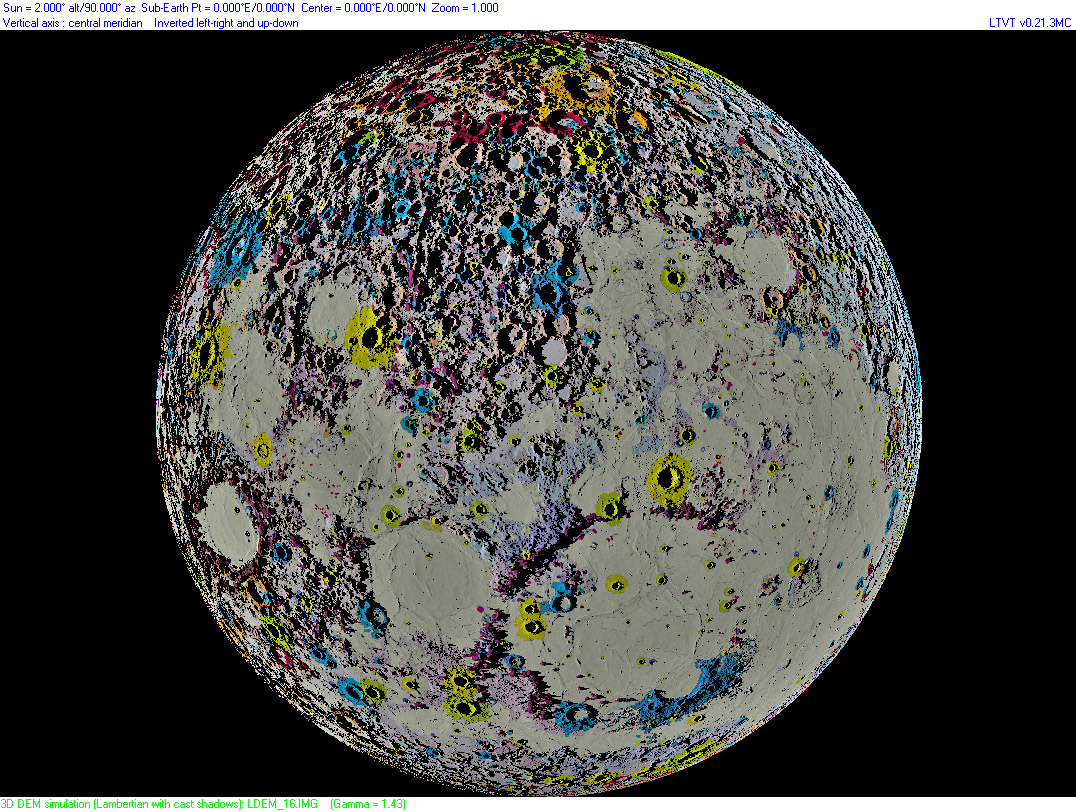April 22, 2010
Colorful Pits

south up image by " rel="nofollow Maurice Collins, Palmerston North, New Zealand
A few days [/April+18%2C+2010 ago] when I saw Maurice's draping of the old (but only one that exists) USGS geologic map of the Moon over a digital terrain map created with Jim Mosher's LTVT using the LRO laser altimetry data, I realized how helpful combining data sets can be in understanding our satellite. But I noticed that away from the terminator the DTM accurately showed no shadows and hence it was hard to compare geology with topography. I asked Maurice if it would be possible to use LTVT to depict the DTM with a constant Sun angle across the Moon. Jim modified LTVT for Maurice to do that and, presto, we have the lunar nearside geology superposed on a topo map with 2° illumination everywhere. The highlands are very reminiscent of the old " rel="nofollow Nasmyth plaster " rel="nofollow models that exaggerated the relief of craters. But this is the actual, but impossible, way the Moon would look if everywhere could instantaneously be illuminated with a low Sun. The yellow and green colors indicate the post-mare craters, and clearly they are not evenly distributed across the nearside; the only large ones in the upper-right quadrant are Tycho and Bullialdus. The map also shows two long ridges defined by shadows - they cross just above and to the left of Eudoxus. Are they real or eye-fooling imaginary lines?
" rel="nofollow Chuck Wood
Related Links
Maurice's " rel="nofollow website
COMMENTS?
Click on this icon File:PostIcon.jpg at the upper right to post a comment.



